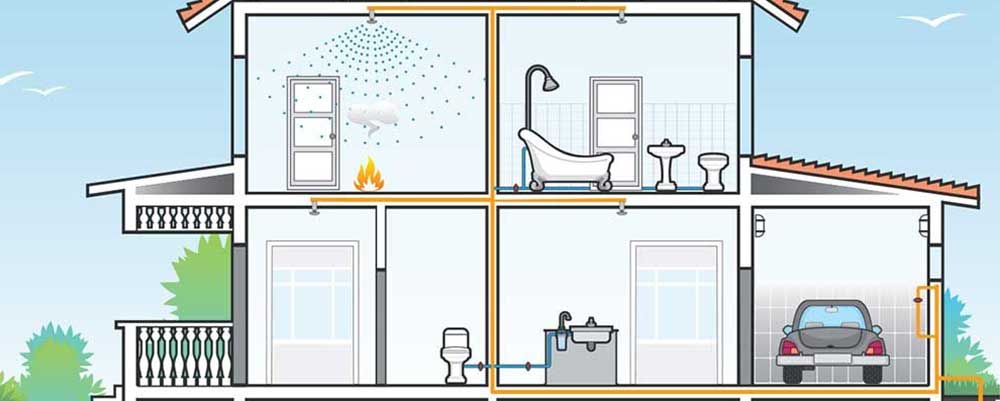Insuring a Sprinklered Home

Insuring a Home with Home Fire Sprinklers
Both you and the insured want the same thing – adequate coverage to protect the home and its contents. A home with automatic fire sprinklers is well protected. That is valuable peace of mind.
It is important to know how fire sprinklers work. The benefits of home fire sprinkler systems are life safety, property protection, and increased home values.
The Facts about Home Fire Sprinkler Systems
Fire sprinklers are connected to a piping network that contains water. Most home fire sprinklers use strong plastic piping and are connected to the municipal water supply. Just like plumbing, the piping is hidden behind the walls and ceilings. In unfinished basements, the piping may be exposed to view. Where water pressure is a problem, a tank and pump may be necessary to provide water to the sprinklers.
Each fire sprinkler has a temperature-sensitive element that causes the sprinkler to activate when there is a fire. Water will flow from only the activated sprinkler, controlling the fire until the fire department arrives. Smoke, cooking vapors, or steam cannot cause the sprinklers to activate – sprinklers only operate in response to the heat of a fire. Home fire sprinklers are designed to be installed on the wall or ceiling and may be concealed behind a decorative plate.
Sprinklers Operate Individually, in Response to the High Temperature of a Fire
Each fire sprinkler has a temperature-sensitive element. Sprinklers flow only when the temperature near the sprinkler reaches 57°-74°C (135°-165°F) and they operate for sufficient time to keep a fire extinguished or controlled until the fire department arrives.
Maintenance is a Snap
Sprinklers require very little maintenance. It’s essential to keep the water valve turned on, so a simple visual inspection should be done routinely to ensure the valve is open. And, inspect the pipes and sprinklers occasionally to make sure nothing is obstructing them.
Home fire sprinklers should have a water flow test on a regular basis. It’s a simple test that can be done by the homeowner or a fire sprinkler contractor.
